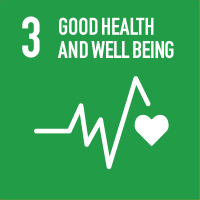Studying at the University of Verona
Here you can find information on the organisational aspects of the Programme, lecture timetables, learning activities and useful contact details for your time at the University, from enrolment to graduation.
Study Plan
The Study Plan includes all modules, teaching and learning activities that each student will need to undertake during their time at the University.
Please select your Study Plan based on your enrollment year.
1° Year
| Modules | Credits | TAF | SSD |
|---|
2° Year activated in the A.Y. 2023/2024
| Modules | Credits | TAF | SSD |
|---|
3° Year activated in the A.Y. 2024/2025
| Modules | Credits | TAF | SSD |
|---|
| Modules | Credits | TAF | SSD |
|---|
| Modules | Credits | TAF | SSD |
|---|
| Modules | Credits | TAF | SSD |
|---|
Legend | Type of training activity (TTA)
TAF (Type of Educational Activity) All courses and activities are classified into different types of educational activities, indicated by a letter.
Dentistry and Children's Dental - Oral & Health Care - PEDIATRIA (2023/2024)
Teaching code
4S000319
Teacher
Credits
1
Language
Italian
Scientific Disciplinary Sector (SSD)
MED/38 - PAEDIATRICS
Period
lezioni CLID - ROV - 1 SEMESTRE dal Oct 2, 2023 al Dec 22, 2023.
Courses Single
Not Authorized
Program
Neuromotor development, child growth, short stature, obesity
Pain and acute events in pediatrics (head trauma, foreign body inhalation, caustic ingestion, acute laryngitis)
Upper and lower respiratory tract infections, bronchial asthma, cystic fibrosis, anaphylaxis, vaccinations
Diabetes Mellitus and Celiac Disease
Exanthematous diseases in pediatrics
Acute and chronic diarrhea, dehydration, abdominal pain, and vomiting
Bibliography
Didactic methods
Lectures with original material in power point format or videos, interactive lessons with the presentation of clinical cases.
Learning assessment procedures
The student's evaluation includes a written test in which 16 multiple-choice questions and 3 open questions are proposed.
Evaluation criteria
The student must demonstrate to be able to have acquired the basic knowledge of the study course.
The score of the exam is attributed by means of a mark expressed out of thirty calculated according to the following scheme: 1 point for each correct question; 0 points for each question left blank or wrong; up to 5 points for the 3 open questions.
To pass the exam (18/30) the student must reach at least the score of 18/30.
To achieve the maximum score (30/30 cum laude), the student must instead reach a score above 30.
Exam language
Italiano

